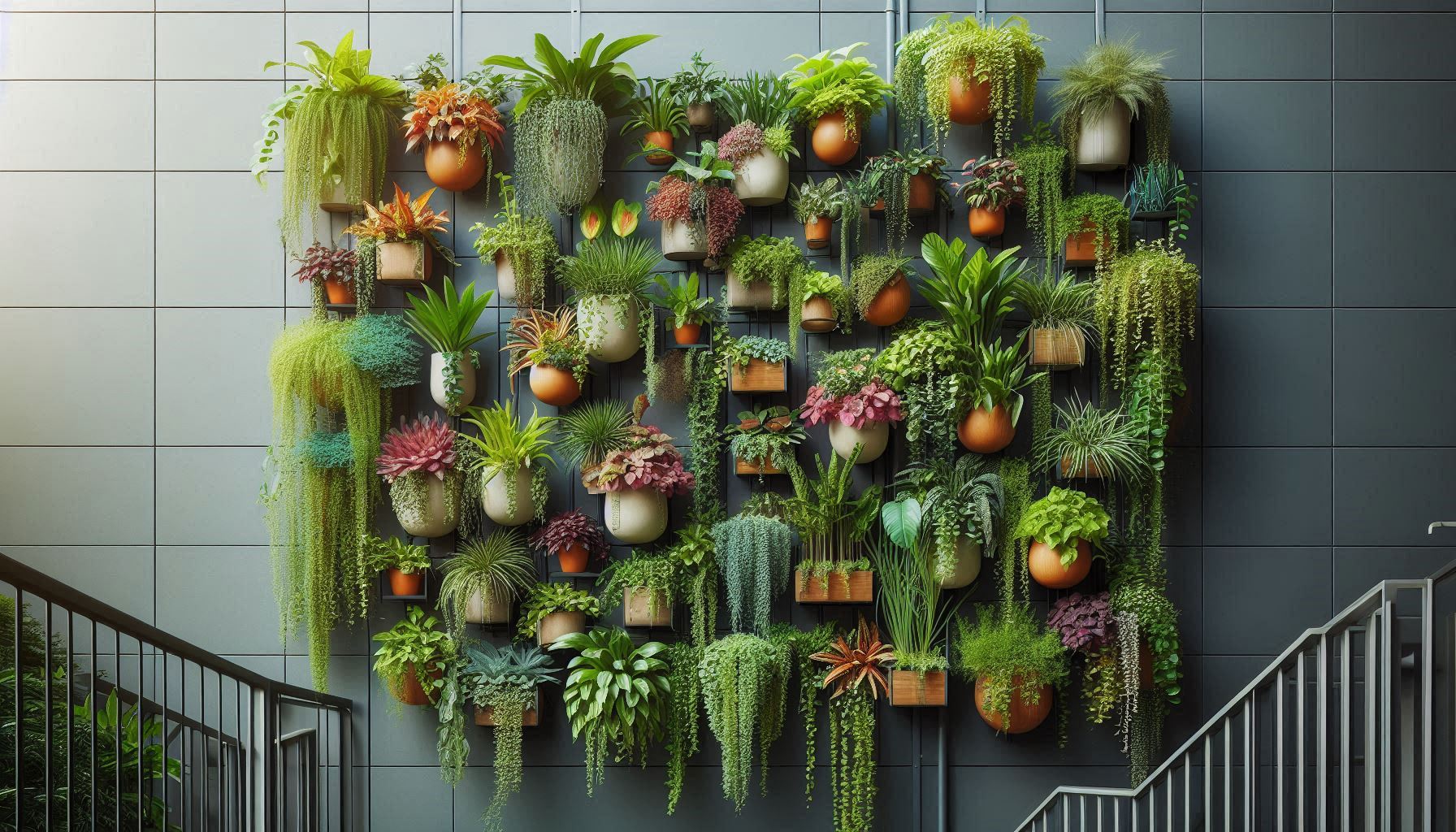Vertical gardens have become increasingly popular in recent years due to their versatility, space-saving benefits, and aesthetic appeal. These innovative gardens not only add a touch of greenery to urban spaces but also provide numerous benefits such as improved air quality, insulation, and sound absorption. One of the key elements of a successful vertical garden is choosing the right plants. In this article, we will explore the selection, care, and maintenance tips for vertical garden plants to help you create a thriving and beautiful green wall.
Selection of Plants for Vertical Gardens
When selecting plants for your vertical garden, there are several factors to consider to ensure their growth and health. Here are some key considerations to keep in mind:
- Light Requirements: Different plants have varying light requirements, so it’s essential to choose plants that are suitable for the amount of light available in your vertical garden location. Plants that require full sun will thrive in a south-facing wall with ample sunlight, while shade-loving plants should be chosen for areas with limited light.
- Watering Needs: Plants in vertical gardens may have different watering requirements compared to traditional gardens due to their vertical orientation. Choose plants that have similar water needs to make watering and maintenance easier. Drought-tolerant plants are a good choice for vertical gardens as they require less frequent watering.
- Growth Habit: Consider the growth habit of the plants you choose, as some may spread horizontally rather than grow vertically. Vining plants, such as ivy, pothos, and philodendron, are excellent choices for vertical gardens as they can easily climb and cover the vertical surface.
- Maintenance: Select plants that are low-maintenance and easy to care for, especially if you are new to vertical gardening. Choose plants that are resistant to pests and diseases and require minimal pruning or grooming.
- Aesthetics: Consider the overall design and aesthetic you want to achieve with your vertical garden. Choose plants with a variety of colors, textures, and shapes to create visual interest and a harmonious display.
Popular Plants for Vertical Gardens

There is a wide variety of plants that are well-suited for vertical gardens, each offering unique characteristics and benefits. Here are some popular plants commonly used in vertical gardens:
- Succulents: Succulents are ideal for vertical gardens due to their low water requirements and unique shapes and colors. Plants like aeoniums, sedums, and echeverias thrive in vertical settings and add a modern and sculptural element to the garden.
- Ferns: Ferns are excellent choices for vertical gardens, especially in shady or humid environments. Boston ferns, maidenhair ferns, and staghorn ferns are popular choices for their lush, cascading foliage that adds a soft and tropical feel to the garden.
- Herbs: Culinary herbs such as basil, mint, thyme, and parsley are great options for vertical gardens, providing fresh herbs for cooking while also adding fragrance and beauty to the space. Herbs are easy to grow and maintain, making them perfect for beginners.
- Air Plants: Tillandsias, or air plants, are unique plants that don’t require soil to grow and can be attached directly to vertical surfaces. These low-maintenance plants come in a variety of shapes and sizes and add a whimsical and artistic touch to vertical gardens.
- Flowering Plants: Flowering plants such as petunias, fuchsias, and geraniums can add a pop of color and vibrancy to vertical gardens. Choose flowering plants with long bloom periods to enjoy continuous blooms throughout the season.
Care and Maintenance Tips for Vertical Garden Plants
Proper care and maintenance are essential for keeping your vertical garden plants healthy and thriving. Here are some tips to help you maintain your vertical garden:
- Watering: Monitor the moisture levels of your vertical garden regularly, as plants may dry out more quickly in vertical arrangements. Water your plants as needed, ensuring that the soil is evenly moist but not waterlogged. Consider installing an irrigation system or using self-watering planters to simplify watering.
- Fertilizing: Provide nutrients to your plants by fertilizing them regularly, especially during the growing season. Choose a balanced liquid fertilizer or slow-release granular fertilizer formulated for the types of plants in your vertical garden. Follow the instructions on the fertilizer package for the correct dosage and frequency.
- Pruning and Grooming: Keep your vertical garden plants tidy and healthy by pruning dead or yellowing leaves, flowers, or stems. Regularly groom vining plants by removing any excessive growth or tendrils to maintain a neat appearance and promote healthy growth.
- Pest and Disease Management: Monitor your plants for signs of pests, such as aphids, spider mites, or mealybugs, and take prompt action to control infestations. Use organic or chemical-free pest control methods to protect your plants while minimizing harm to beneficial insects.
- Light Requirements: Ensure that your plants are receiving adequate light for healthy growth and development. Adjust the positioning of your vertical garden to maximize sunlight exposure or supplement with artificial grow lights if needed, especially in low-light conditions.
- Support and Training: Provide support structures such as trellises, frames, or grid systems for vining plants to climb and attach themselves securely. Guide the growth of your plants by gently training them to climb or cascade in the desired direction to create a visually appealing display.
- Seasonal Care: Adjust your care routine based on the changing seasons to meet the needs of your plants. Consider bringing sensitive plants indoors during colder months or protecting them from extreme heat or frost to ensure their survival.
Vertical gardens offer a creative and innovative way to bring nature into urban spaces and maximize greenery in limited areas. By carefully selecting plants that are well-suited for vertical growth and following proper care and maintenance practices, you can create a thriving and beautiful vertical garden that enhances your living or working environment. Whether you choose succulents, ferns, herbs, air plants, or flowering plants, the key to successful vertical gardening lies in understanding the needs of your plants and providing the necessary care to help them flourish. With the right selection, care, and maintenance, your vertical garden will be a vibrant and sustainable oasis that brings joy and beauty to your surroundings.

